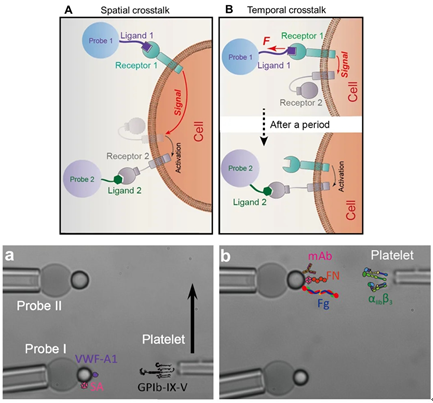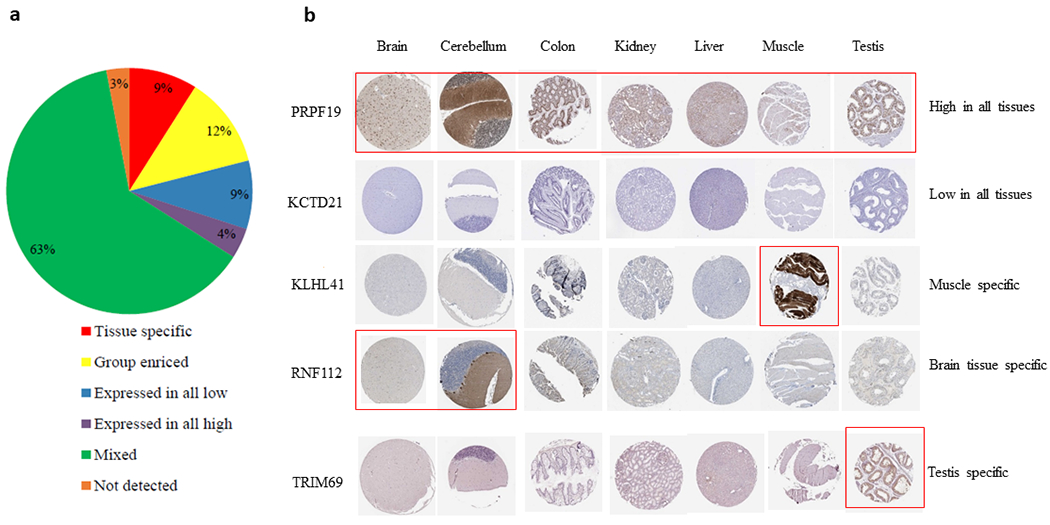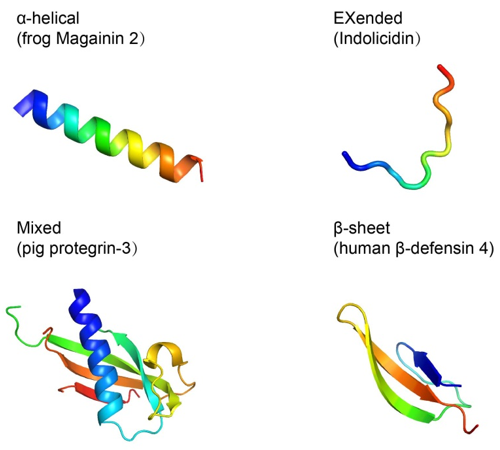Biolayer interferometry
Home » » Biolayer interferometryYour Biolayer interferometry images are available. Biolayer interferometry are a topic that is being searched for and liked by netizens today. You can Get the Biolayer interferometry files here. Find and Download all royalty-free vectors.
If you’re searching for biolayer interferometry images information connected with to the biolayer interferometry keyword, you have come to the ideal blog. Our site always gives you suggestions for viewing the maximum quality video and image content, please kindly search and locate more informative video content and graphics that match your interests.
Biolayer Interferometry. White light is shone down a fiber optic biosensor and the interference between light reflected off two layersa reference layer and a biological layeris measured 23. In chemistry it is important to know the substances affinity thermodynamic properties and stoichiometry. BLI is a fiber optics-based biophysical technique designed to measure the affinity between biological molecules. Biolayer interferometry of lipid nanodisc-reconstituted yeast vacuolar H -ATPase.
 Enzyme Fragment Complementation Assay Enzymes Fragments Development From pinterest.com
Enzyme Fragment Complementation Assay Enzymes Fragments Development From pinterest.com
Label-free assays based on Bio-Layer Interferometry BLI and Surface Plasmon Resonance SPR platforms Instruments consumables software post-sale services one-on-one training ForteBio is a Market Leader in Label-Free Biomolecular Analysis Octet BLItz Pioneer Bio-Layer Interferometry. Bio-Layer Interferometry BLI is an optical technique for measuring macromolecular interactions by analyzing interference patterns of white light reflected from the surface of a biosensor tip. Sharma S1 Wilkens S1. Lower accuracy and poor precision. We describe the use of Bio-layer Interferometry to study inhibitory interactions of subunit ε with the catalytic complex of Escherichia coli ATP synthase. Human mAb derived from plasmablasts of recipients of RTSSAS01 RTSS the most advanced malaria vaccine candidate.
Label-free assays based on Bio-Layer Interferometry BLI and Surface Plasmon Resonance SPR platforms Instruments consumables software post-sale services one-on-one training ForteBio is a Market Leader in Label-Free Biomolecular Analysis Octet BLItz Pioneer Bio-Layer Interferometry.
Due to its great flexibility it allows us to detect quantify and determine the kinetics of biomolecule interactions even in different types of complex biological matrixes. Interferometry is used for the detection of light intensity after interference between lights of different wavelengths. Biolayer Interferometry BLI is an optical technique that measures macromolecular interactions by analyzing interference patterns of white light reflected from the surface of a biosensor tip. Label-free assays based on Bio-Layer Interferometry BLI and Surface Plasmon Resonance SPR platforms Instruments consumables software post-sale services one-on-one training ForteBio is a Market Leader in Label-Free Biomolecular Analysis Octet BLItz Pioneer Bio-Layer Interferometry. Bio-layer interferometry for measuring kinetics of protein-protein interactions and allosteric ligand effects. BLI is a fiber optics-based biophysical technique designed to measure the affinity between biological molecules.
 Source: pinterest.com
Source: pinterest.com
Biolayer interferometry BLI technology is at the heart of the Gator Label-Free Systems enabling highly sensitive measurement of a wide range of small molecules to large. Lower accuracy and poor precision. Label-free assays based on Bio-Layer Interferometry BLI and Surface Plasmon Resonance SPR platforms Instruments consumables software post-sale services one-on-one training ForteBio is a Market Leader in Label-Free Biomolecular Analysis Octet BLItz Pioneer Bio-Layer Interferometry. BLI is a fiber optics-based biophysical technique designed to measure the affinity between biological molecules. In chemistry it is important to know the substances affinity thermodynamic properties and stoichiometry.
 Source: tr.pinterest.com
Source: tr.pinterest.com
The antibody or antigen is immobilized onto the. Biolayer interferometry of lipid nanodisc-reconstituted yeast vacuolar H -ATPase. For higher throughput BLI technology can be combined with a robotic platform 4. Bio-Layer Interferometry Bio-Layer Interferometry BLI based biosensor technology is a powerful tool to measure molecular interactions in real time. Bio-Layer Interferometry BLI is an optical technique for measuring macromolecular interactions by analyzing interference patterns of white light reflected from the surface of a biosensor tip.
 Source: in.pinterest.com
Source: in.pinterest.com
Our biolayer interferometry immunosorbent assay BLI-ISA utilizes single-use biosensors in an automated dip-and-read format providing real-time optical measurements of antigen loading plasma. In particular biolayer interferometry BLI utilizes a white light source a transmission optical fiber and an optical fiber sensor. BLI or Biolayer Interferometry is a label-free biosensor technology that allows for real-time analysis of the kinetics of molecular interactions by detecting changes in interference patterns of white light reflected from the surface of fiber-optic sensor tips. Plasma utilizing biolayer interferometry BLI. Bio-Layer Interferometry Bio-Layer Interferometry BLI based biosensor technology is a powerful tool to measure molecular interactions in real time.
 Source: br.pinterest.com
Source: br.pinterest.com
Human mAb derived from plasmablasts of recipients of RTSSAS01 RTSS the most advanced malaria vaccine candidate. In particular biolayer interferometry BLI utilizes a white light source a transmission optical fiber and an optical fiber sensor. BLI experiments are used to determine the kinetics and affinity of molecular interactions. Binding of molecules to the biosensor surface results in a. Human mAb derived from plasmablasts of recipients of RTSSAS01 RTSS the most advanced malaria vaccine candidate.
 Source: pinterest.com
Source: pinterest.com
We describe the use of Bio-layer Interferometry to study inhibitory interactions of subunit ε with the catalytic complex of Escherichia coli ATP synthase. Bio-layer interferometry for measuring kinetics of protein-protein interactions and allosteric ligand effects. Interferometry is used for the detection of light intensity after interference between lights of different wavelengths. For higher throughput BLI technology can be combined with a robotic platform 4. Our biolayer interferometry immunosorbent assay BLI-ISA utilizes single-use biosensors in an automated dip-and-read format providing real-time optical measurements of antigen loading plasma.
 Source: in.pinterest.com
Source: in.pinterest.com
BLI or Biolayer Interferometry is a label-free biosensor technology that allows for real-time analysis of the kinetics of molecular interactions by detecting changes in interference patterns of white light reflected from the surface of fiber-optic sensor tips. Bio-Layer Interferometry BLI combines the high-throughput characteristics of a 96-well or 384-well plate format with improved precision reproducibility and ease of use. Sharma S1 Wilkens S1. Bacterial F-type ATP synthase is the target of a new FDA-approved antibiotic to. Biolayer interferometry of lipid nanodisc-reconstituted yeast vacuolar H -ATPase.
 Source: in.pinterest.com
Source: in.pinterest.com
Interferometry is used for the detection of light intensity after interference between lights of different wavelengths. For higher throughput BLI technology can be combined with a robotic platform 4. Biolayer Interferometry BLI is an optical technique that measures macromolecular interactions by analyzing interference patterns of white light reflected from the surface of a biosensor tip. Binding of molecules to the biosensor surface results in a. Interferometry is used for the detection of light intensity after interference between lights of different wavelengths.
 Source: tr.pinterest.com
Source: tr.pinterest.com
Plasma utilizing biolayer interferometry BLI. Our biolayer interferometry immunosorbent assay BLI-ISA utilizes single-use biosensors in an automated dip-and-read format providing real-time optical measurements of antigen loading plasma. Binding of molecules to the biosensor surface results in a. BLI or Biolayer Interferometry is a label-free biosensor technology that allows for real-time analysis of the kinetics of molecular interactions by detecting changes in interference patterns of white light reflected from the surface of fiber-optic sensor tips. Bio-layer interferometry for measuring kinetics of protein-protein interactions and allosteric ligand effects.
 Source: pinterest.com
Source: pinterest.com
We describe the use of Bio-layer Interferometry to study inhibitory interactions of subunit ε with the catalytic complex of Escherichia coli ATP synthase. In chemistry it is important to know the substances affinity thermodynamic properties and stoichiometry. For higher throughput BLI technology can be combined with a robotic platform 4. White light is shone down a fiber optic biosensor and the interference between light reflected off two layersa reference layer and a biological layeris measured 23. Binding of molecules to the biosensor surface results in a.
 Source: ar.pinterest.com
Source: ar.pinterest.com
Binding of molecules to the biosensor surface results in a. Bio-layer interferometry for measuring kinetics of protein-protein interactions and allosteric ligand effects. The antibody or antigen is immobilized onto the. Binding of molecules to the biosensor surface results in a. Due to its great flexibility it allows us to detect quantify and determine the kinetics of biomolecule interactions even in different types of complex biological matrixes.
 Source: pinterest.com
Source: pinterest.com
For higher throughput BLI technology can be combined with a robotic platform 4. 1Department of Biochemistry and Molecular Biology SUNY Upstate Medical University 750 East Adams Street Syracuse New York 13210. Our biolayer interferometry immunosorbent assay BLI-ISA utilizes single-use biosensors in an automated dip-and-read format providing real-time optical measurements of antigen loading plasma. BLI or Biolayer Interferometry is a label-free biosensor technology that allows for real-time analysis of the kinetics of molecular interactions by detecting changes in interference patterns of white light reflected from the surface of fiber-optic sensor tips. Label-free assays based on Bio-Layer Interferometry BLI and Surface Plasmon Resonance SPR platforms Instruments consumables software post-sale services one-on-one training ForteBio is a Market Leader in Label-Free Biomolecular Analysis Octet BLItz Pioneer Bio-Layer Interferometry.
 Source: pinterest.com
Source: pinterest.com
Our biolayer interferometry immunosorbent assay BLI-ISA utilizes single-use biosensors in an automated dip-and-read format providing real-time optical measurements of antigen loading plasma. The antibody or antigen is immobilized onto the. For higher throughput BLI technology can be combined with a robotic platform 4. Biolayer Interferometry BLI is an optical technique that measures macromolecular interactions by analyzing interference patterns of white light reflected from the surface of a biosensor tip. Interferometry is used for the detection of light intensity after interference between lights of different wavelengths.
 Source: pinterest.com
Source: pinterest.com
Human mAb derived from plasmablasts of recipients of RTSSAS01 RTSS the most advanced malaria vaccine candidate. Bio-Layer Interferometry BLI combines the high-throughput characteristics of a 96-well or 384-well plate format with improved precision reproducibility and ease of use. Biolayer interferometry BLI technology is at the heart of the Gator Label-Free Systems enabling highly sensitive measurement of a wide range of small molecules to large. For higher throughput BLI technology can be combined with a robotic platform 4. Biolayer interferometry-based immunosensor.
 Source: pinterest.com
Source: pinterest.com
Bio-Layer Interferometry BLI is an optical technique for measuring macromolecular interactions by analyzing interference patterns of white light reflected from the surface of a biosensor tip. Label-free assays based on Bio-Layer Interferometry BLI and Surface Plasmon Resonance SPR platforms Instruments consumables software post-sale services one-on-one training ForteBio is a Market Leader in Label-Free Biomolecular Analysis Octet BLItz Pioneer Bio-Layer Interferometry. Bio-layer interferometry or BLI is an optical analytical technique that observes the associative and dissociative interaction of molecules. Interferometry is used for the detection of light intensity after interference between lights of different wavelengths. In chemistry it is important to know the substances affinity thermodynamic properties and stoichiometry.
 Source: pinterest.com
Source: pinterest.com
1Department of Biochemistry and Molecular Biology SUNY Upstate Medical University 750 East Adams Street Syracuse New York 13210. We describe the use of Bio-layer Interferometry to study inhibitory interactions of subunit ε with the catalytic complex of Escherichia coli ATP synthase. For higher throughput BLI technology can be combined with a robotic platform 4. Plasma utilizing biolayer interferometry BLI. In this study using real-time detection of Ab-Ag binding by biolayer interferometry BLI technique we have developed a qualified assay for measuring avidity of vaccine-induced Abs specific for Plasmodium falciparum circumsporozoite protein CSP Ags.
 Source: tr.pinterest.com
Source: tr.pinterest.com
Bio-Layer Interferometry BLI is an optical technique for measuring macromolecular interactions by analyzing interference patterns of white light reflected from the surface of a biosensor tip. Bio-Layer Interferometry BLI combines the high-throughput characteristics of a 96-well or 384-well plate format with improved precision reproducibility and ease of use. Lower accuracy and poor precision. Due to its great flexibility it allows us to detect quantify and determine the kinetics of biomolecule interactions even in different types of complex biological matrixes. The antibody or antigen is immobilized onto the.
 Source: tr.pinterest.com
Source: tr.pinterest.com
Interferometry is used for the detection of light intensity after interference between lights of different wavelengths. Biolayer interferometry BLI technology is at the heart of the Gator Label-Free Systems enabling highly sensitive measurement of a wide range of small molecules to large. Lower accuracy and poor precision. Bio-Layer Interferometry Bio-Layer Interferometry BLI based biosensor technology is a powerful tool to measure molecular interactions in real time. Bio-Layer Interferometry BLI combines the high-throughput characteristics of a 96-well or 384-well plate format with improved precision reproducibility and ease of use.
 Source: tr.pinterest.com
Source: tr.pinterest.com
Bio-layer interferometry for measuring kinetics of protein-protein interactions and allosteric ligand effects. Binding of molecules to the biosensor surface results in a. BLI or Biolayer Interferometry is a label-free biosensor technology that allows for real-time analysis of the kinetics of molecular interactions by detecting changes in interference patterns of white light reflected from the surface of fiber-optic sensor tips. Biolayer Interferometry BLI is an optical technique that measures macromolecular interactions by analyzing interference patterns of white light reflected from the surface of a biosensor tip. Our biolayer interferometry immunosorbent assay BLI-ISA utilizes single-use biosensors in an automated dip-and-read format providing real-time optical measurements of antigen loading plasma.
This site is an open community for users to do submittion their favorite wallpapers on the internet, all images or pictures in this website are for personal wallpaper use only, it is stricly prohibited to use this wallpaper for commercial purposes, if you are the author and find this image is shared without your permission, please kindly raise a DMCA report to Us.
If you find this site helpful, please support us by sharing this posts to your favorite social media accounts like Facebook, Instagram and so on or you can also bookmark this blog page with the title biolayer interferometry by using Ctrl + D for devices a laptop with a Windows operating system or Command + D for laptops with an Apple operating system. If you use a smartphone, you can also use the drawer menu of the browser you are using. Whether it’s a Windows, Mac, iOS or Android operating system, you will still be able to bookmark this website.